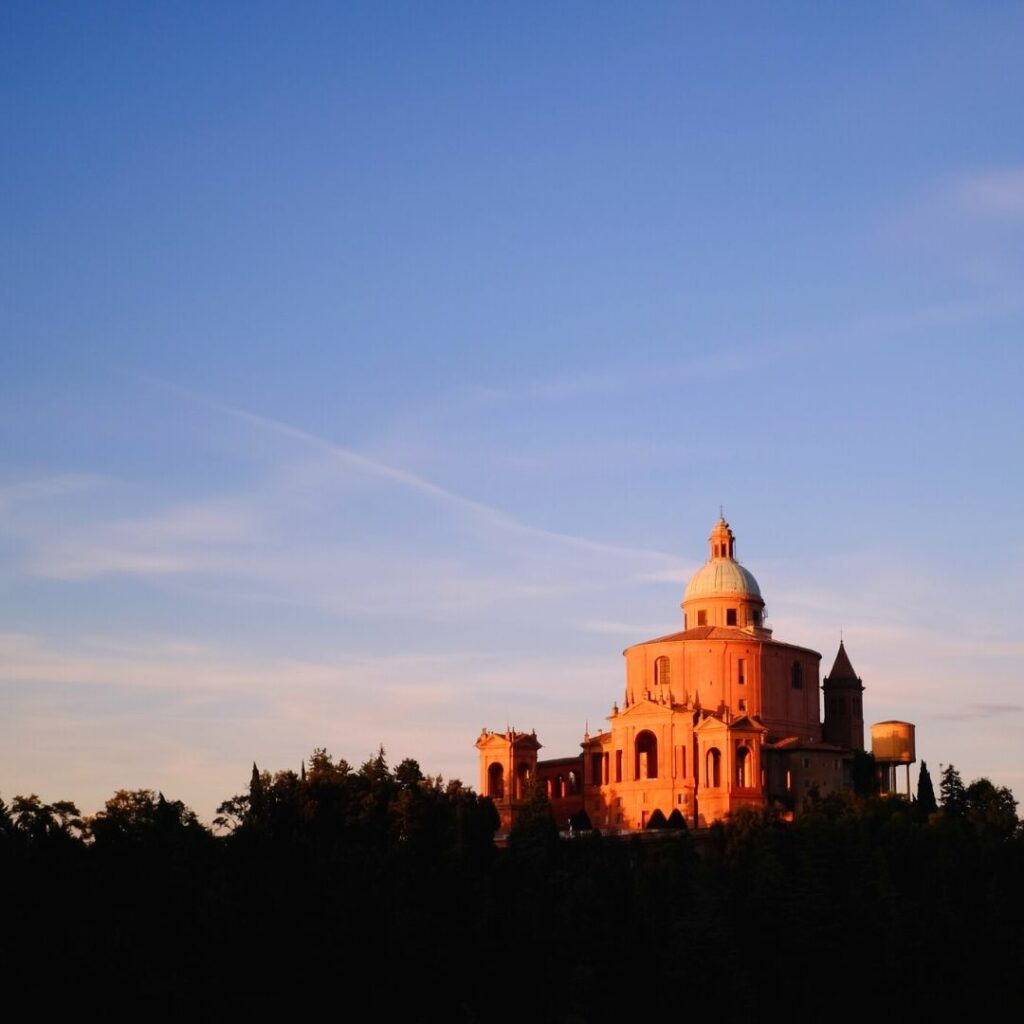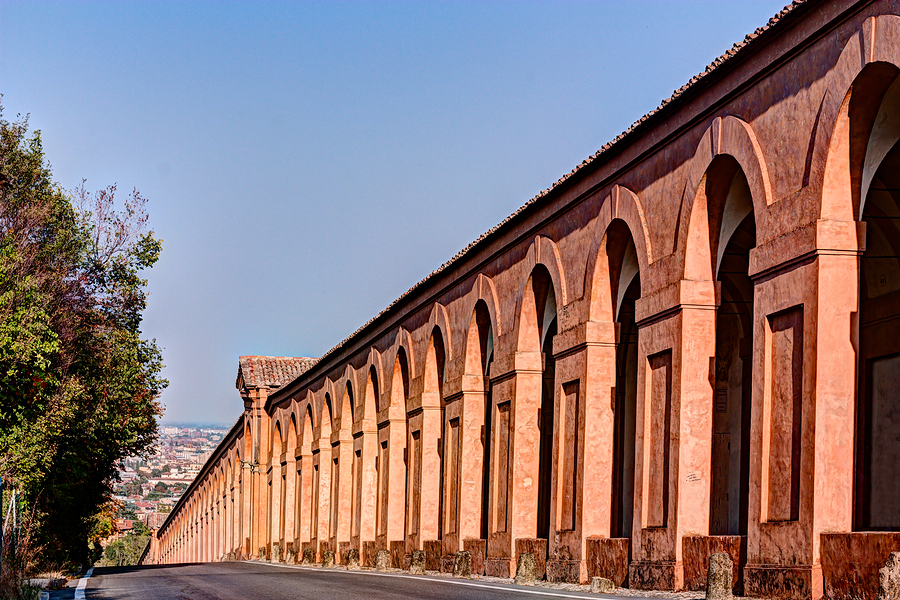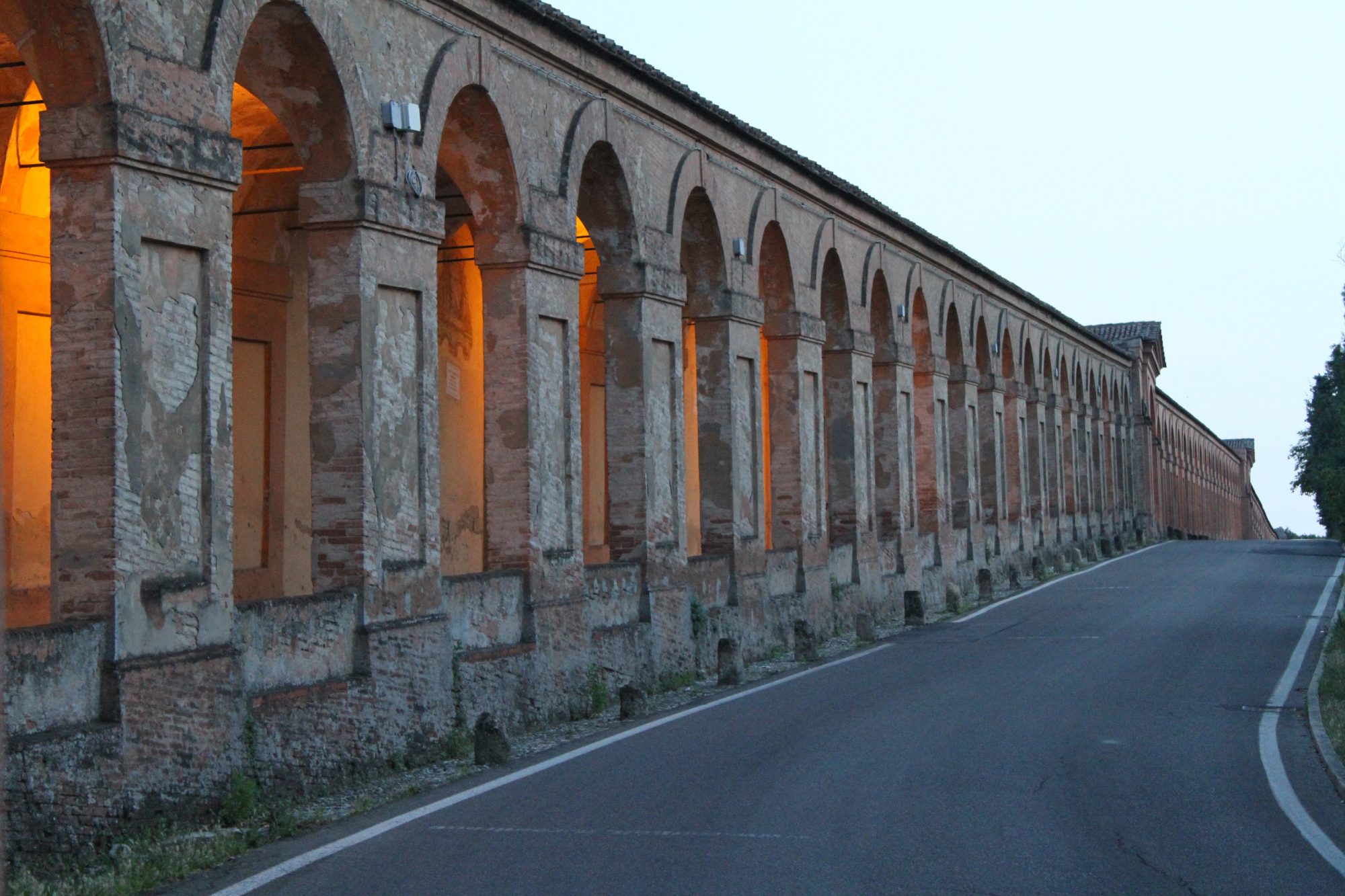
Il Santuario di San Luca e il suo portico storia e curiosità
The Portico di San Luca is not only the largest display of Portico architecture ever but also the longest covered walkway in the world! Built from 1674 to 1793, this beautiful archway connects the city to the Sanctuary of the Madonna di San Luca and its green hilltops.

Portico di San Luca The Scenic Walk You Can't Miss in Bologna Italy
Portico di San Luca: The Longest Covered Walkway in the World Beginning at Porta Saragozza, the Portico di San Luca connects the city to the Sanctuary of the Madonna di San Luca on top of the Colle della Guardia hill (289 meters above sea level).

Bologna's Portico di San Luca, the Longest in the World ITALY Magazine
The handsome Portico of San Luca. Construction of the portico you see today started in 1674 and the Sanctuary at the top of the hill was built in the 18 th Century. However, its story goes back as far as 1192, when a young woman (or two sisters; I've read different accounts) founded a hermitage where the Sanctuary of the Madonna of San Luca now stands.

Bolonia, Italia Famoso Pórtico De San Luca Foto de archivo Imagen de longest, italiano 200552772
San Luca, the traditional destination of religious pilgrimages linked to the devotion of the Blessed Virgin, can be reached from the centre of Bologna along two itineraries: the classic and shorter one through the porticoes and a second longer but of higher naturalistic interest through Talon park.

Walking in Bologna The Portico and the Sanctuary of San Luca Bologna Uncovered
06 August 2019 San Luca The portico of San Luca is a prime example of a devotional "via coperta" constructed in Italy during the Baroque period. The component begins in the city and ends at the Sanctuary of Madonna di San Luca, which was the end of the pilgrimage route.

The Portico Di San Luca, Bologna The Longest Arcade In The World?
Coordinates: 44.480°N 11.298°E The Sanctuary of the Madonna of San Luca is a basilica church in Bologna, northern Italy, sited atop a forested hill, Colle or Monte della Guardia, some 300 metres above the city plain, just south-west of the historical centre of the city. [1]

How To Walk the Epic Portico of San Luca, Bologna in 2023
The Portico di San Luca in Bologna is an iconic sight that travelers from all over the world come to experience. This arched walkway spans around 3.8 km long and has a total of 666 arches, making it the longest portico (covered walkway) in the world. The portico was built between 1674 and 1793.

Portico di San Luca The Scenic Walk You Can't Miss in Bologna Italy
The construction of the portico was completed by the Bolognese architect Carlo Francesco Dotti (1670-1759) to whom we also owe the construction of the new basilica designed for the occasion of the portico and the Arco del Meloncello, the point where the portico leaves Via Saragozza and begins the uphill path to the top of the Colle della Guardia.

Portico Di San Luca, Bologna Stock Image Image of architecture, construction 29681711
The Portico di San Luca is a 3.8km long roofed arcade leading to the Sanctuary of the Madonna of San Luca on a hill overlooking Bologna in Italy. The Portico di San Luca leads all the way up the hill to the church and is a fantastic walk. They started building the portico in the 17th century and they completed in the 18th.

Worlds longest continuous portico, San Luca in Bologna, Italy. province of Bologna, Emilia
Portico di San Luca 4.5 516 reviews #4 of 471 things to do in Bologna Historic Walking AreasArchitectural Buildings Write a review About Duration: 2-3 hours Suggest edits to improve what we show. Improve this listing Tours & experiences Explore different ways to experience this place. See options All photos (349)

Portico devozionale di San Luca I Portici di Bologna
Historic Center - Portico of San Luca. Get to know this 5.6-mile point-to-point trail near Bologna, Emilia-Romagna. Generally considered a moderately challenging route, it takes an average of 2 h 22 min to complete. This is a very popular area for hiking and running, so you'll likely encounter other people while exploring.

Portico di San Luca Bologna's amazing covered walkway All About Italy
CLIMBING THE PORTICO DI SAN LUCA. Built between 1723 and 1757 on the site where a church has existed for a thousand years, the Sanctuary of the Madonna of San Luca stands proudly on the Colle della Guardia south-west of Bologna's historic centre at an elevation of 300 metres. Visible from the Old Town itself, the Baroque sanctuary is a symbol.

la Storia del Portico di San Luca Origine di Bologna
Portico of San Luca Porticoes in via Farini The "Portico of Death" Portico of Pavaglione Portico of Malvezzi Campeggi Palace Portico of Bianchini Palace Portico of the Bank of Italy Palace Porticoes in via Farini Porticoes in via San Leonardo References ^ I Portici di Bologna, Bologna Welcome ^ "Bologna, la città dei portici".

Portico di San Luca Bologna's amazing covered walkway All About Italy
This itinerary takes place along the city's most famous portico: the 4 km continuous arched walkway that connects the old city center to the Sanctuary of the Madonna di San Luca, on top of the surrounding hills. The walkway was built as an act of faith to welcome pilgrims on their way to the church.

Il portico più lungo del mondo San Luca, il simbolo di Bologna • Kilig Travel Blog
Sanctuary of San Luca Via di San Luca 36 40135 Bologna How to get there Entrance Free Interests Art & Culture Details Accessibility The Basilica is accessible by elevator to all types of disabilities. Only the dome and crypt are not accessible. Reservations are required for access for groups only. Services San Luca Sky Experience

Picturesque Porticoes Of Bologna Set To Achieve UNESCO Recognition
This itinerary takes place along the city's most famous portico: the 4 km continuous arched walkway that connects the old city center to the Sanctuary of the Madonna di San Luca, on top of the surrounding hills. The walkway was built as an act of faith to welcome pilgrims on their way to the church.